by bria4123 on May 15, 2012
So it leans, big deal. But they damn near charge you a Ferrari to go to the top. But I knew that there was much better stuff in Pisa to see than this tourist trap.
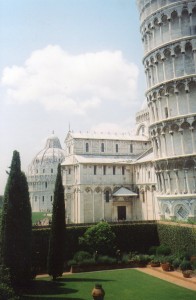
Pisa was one of the most influential cities in the Italian Renaissance, and it deserves a deeper look than tourism cliches. We’ll peek beneath its surfaces here. [click to continue…]
by bria4123 on May 13, 2012
The Renaissance is a great period to connect with today.
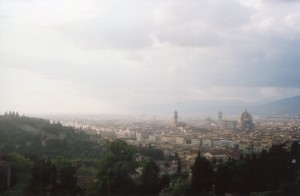
Many people’s perspectives were expanding, as they are in our globalized world. The Renaissance is not only especially relevant today, it was also much richer than most people have realized. [click to continue…]
by bria4123 on May 11, 2012
Around 1200 the Khmer King Jayavarman piled more stones on the earth than any other Khmer king had by a huge margin.
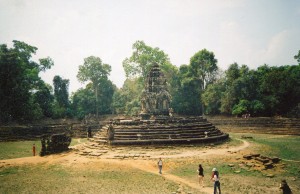
Many folks focus on the big monuments, like Preah Khan, Ta Prohm and the Bayon. But some of his smaller temples are just as rewarding. I found Neak Pean as moving as the behemoths. [click to continue…]
by bria4123 on May 9, 2012
Yesterday’s post on the Bayon was supposed to be the last in a series, but I knew this post was coming.
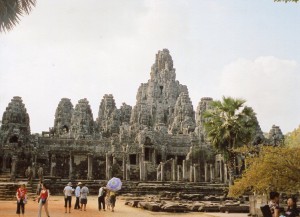
Nobody has wrapped his mind around the Bayon yet. Even specialists see new meanings in the most fascinating Khmer temple besides Angkor Wat. We’ll explore one of the more interesting theories about it today. [click to continue…]
by bria4123 on May 8, 2012
We’ll now approach the center of the Bayon and explore some of the great temple’s inner meanings.
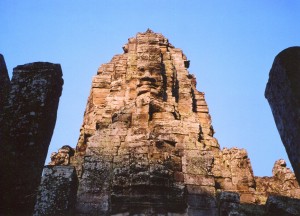
One of its many face-towers (above) keeps the state in order–can they build a few of them in Washington D.C. and on Wall Street?
When I ascended to the Bayon’s upper terrace, these towers were densely clustered. King Jayavarman VII envisioned the Bayon as Angkor’s center, so I was entering the most important place in the Khmer universe when it was at the height of its power. [click to continue…]
by bria4123 on May 7, 2012
Vistas of the Great Wall of China are so jaw-dropping that most people don’t feel a need to look beneath the surface.
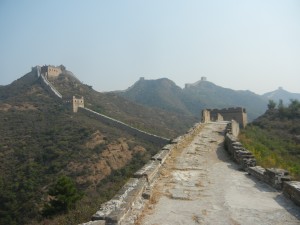
But this blog has looked beneath lots of surfaces, and into deep cultural roots. The Great Wall of China’s were already ancient when Qin Shihuang consolidated his state’s defensive walls in the late 3rd century BCE. [click to continue…]
by bria4123 on May 5, 2012
I got a bit distracted since I wrote the last post on the Bayon, but a little country called China can do that to you. Back to the Bayon, one of the world’s greatest religious monuments.
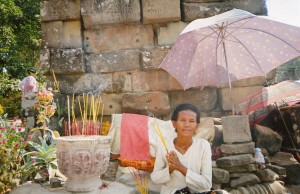
King Jayavarman VII began it about 50 years after Angkor Wat was built–when Europeans were erecting Chartres Cathedral. Scholars have seen Angkor Wat and the Bayon as Khmer models of the universe. But the Bayon took steps towards a revolution in perspective. [click to continue…]
by bria4123 on May 3, 2012
In 1980 Sichuan archeologists started to excavate a walled city about 40 km north of Chengdu, at a place called Sanxingdui. What they found revolutionized many people’s ideas of ancient China.
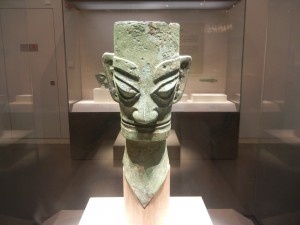
People had thought that the Shang Dynasty, which presided around the middle Yellow River, was the one great bastion of Chinese civilization around 1200 BCE. But the Sanxingdui site and excavations in other parts of China have greatly expanded people’s views of ancient China. Robert Bagley concluded that China at that time was larger, more diverse and more interconnected than scholars had realized. Come and explore one of the most interesting sites. [click to continue…]
by bria4123 on May 2, 2012
Many old history books say that China was first unified under the Shang Dynasty around 1500 BCE, but modern archeology has been showing that a lot of Chinese art forms are much older.
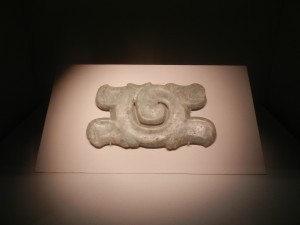
And people over a much vaster area of land than what the Shang ruled created them. Chinese culture is richer than most people think. [click to continue…]
by bria4123 on May 1, 2012
The Great Wall never ceases to awe.
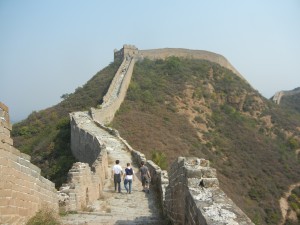
But recent archeology is showing that the process that it emerged in was even longer than most people have thought. We’ll explore some of its most ancient foundations, and discover that they’re still alive in Chinese culture. [click to continue…]










